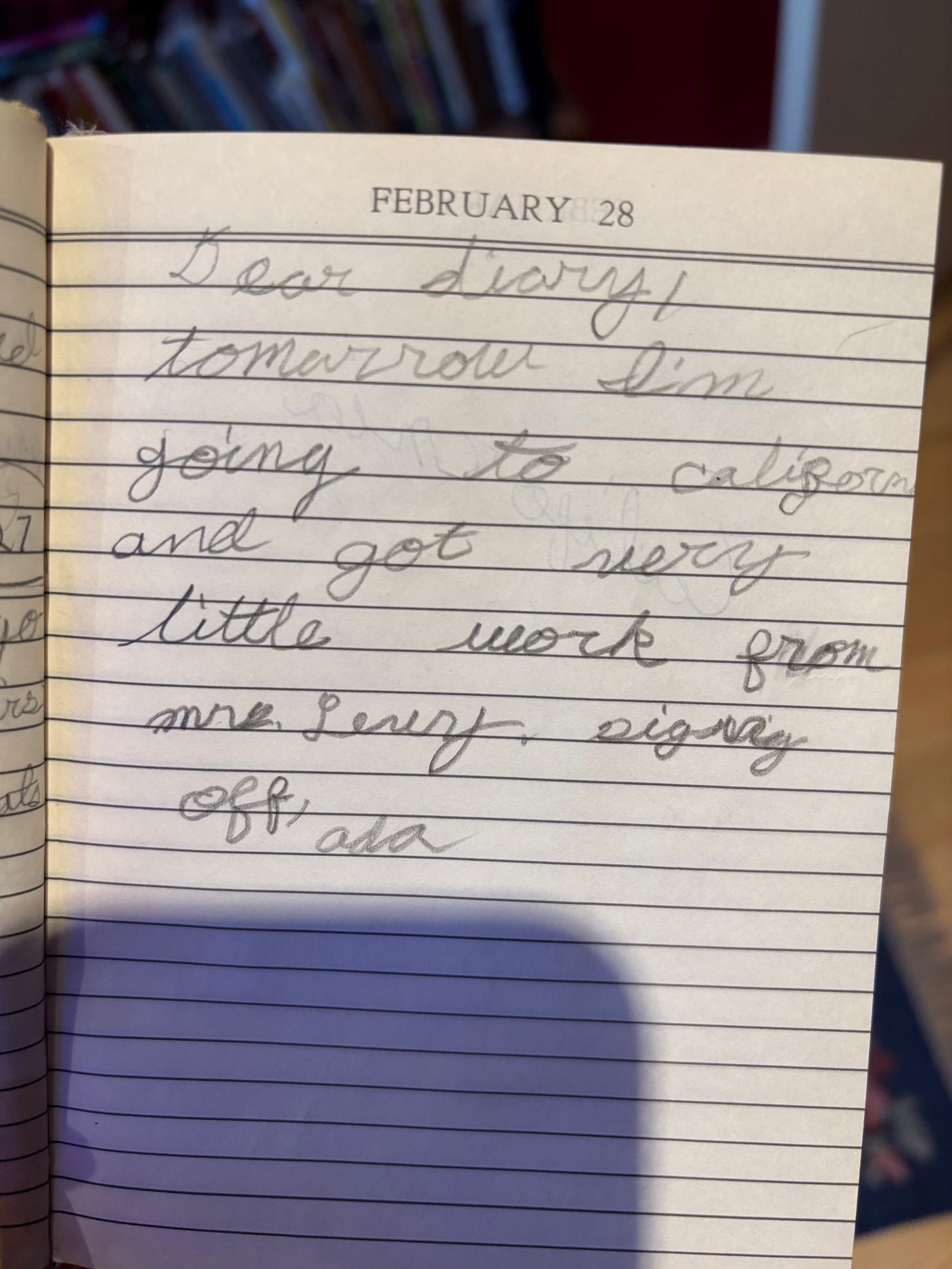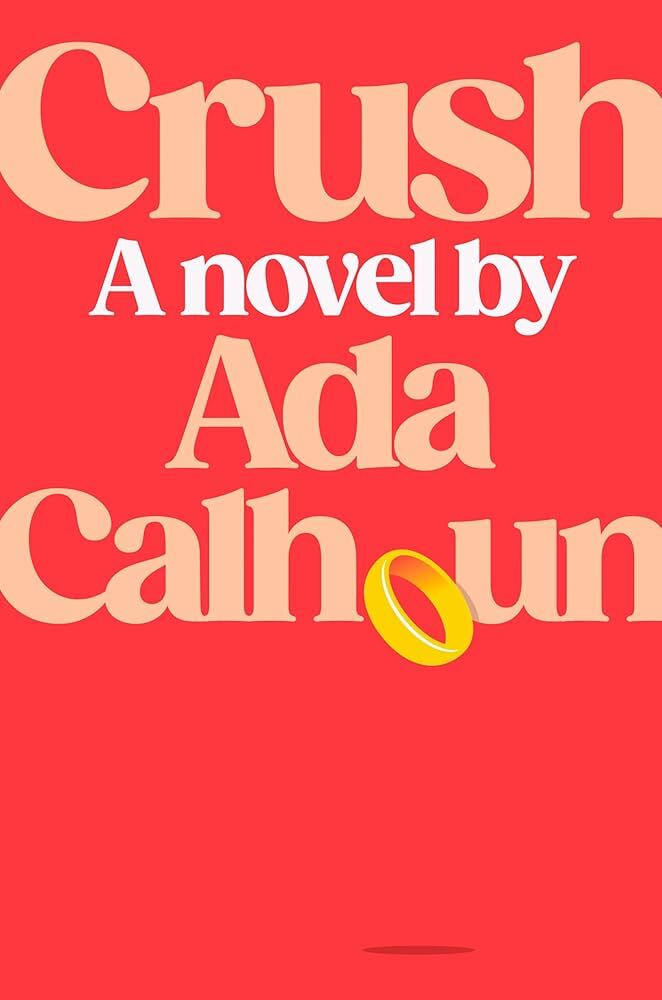Hello there! Welcome to The Magpie, a newsletter that serves as a collection of shiny objects about writing, creativity, hopes, and obsessions. My current obsession is diaries and the people who write them. Since I started keeping one at age eight, my diary has been a place of exploration and intensity, of lists and favorite quotes, of ticket stubs and wildflowers. It is a place to remember and a place to dream.
My most recent book, The Leaving Season: A Memoir in Essays, is out now! I relied on decades of my own diaries to help me write this book. My next book focuses on historical diaries of women, famous and not, and why we continue to write—and read!—these archives.
This is a Show Me Your Diary interview, a series that explores diaries and the creatives who keep them. Every week, I ask a new person to give us a peek inside their diary process, complete with photos. Yes, we are very nosy!
Want to show me your diary, or know somebody who does? Send me an email—you can just reply to this newsletter. Let’s get started…
Today’s interview is with Ada Calhoun, a force of nature in the writing world, with a stellar list of books including her newest, Crush: A Novel, as well as nonfiction cult classics Why We Can’t Sleep and St. Marks is Dead.
Although I’d long been a fan of her work, I first met Ada at an event at The Church in Sag Harbor (a magical place) during a Memoir Roundtable with my editor and incredible writer Jill Bialosky and memoirist Alice Carriére. After spending some time together in The Church’s stunning library and ringing the steeple bell, Ada filled me in on her new novel Crush —just completed at the time—and I already knew it would become a favorite of mine. Regardless of genre, Ada’s writing is sharp as the blade of a knife, spare and razor-edged. When I saw her file cabinet full of diaries (see below), it just made sense.
I saw the play The Picture of Dorian Gray this week with the explosive Sarah Snook (just nominated for Best Actress in a Play!) and of course this story—and the inventive way Snook and director Kip Williams adapted the Oscar Wilde novel—made me think of Ada’s work, especially the luminous Also a Poet about her father, the late art critic and poet, Peter Schjeldahl. So much about both Ada’s book and Wilde’s novel and play are about the relationship between art and the artist, the viewed and the viewer, desire and the desired.
Oscar Wilde wrote that “Memory is the diary that we all carry around with us.” In the Dorian Gray adaptation on stage, I caught a line that I believe went something like: “Conscience makes a great editor.” (If I have this right, this is probably pulled from the line in the novel that reads, “Conscience and cowardice are really the same things, Basil. Conscience is the trade-name of the firm. That is all.”) Diaries, I believe, are another way for us to wrestle privately with our conscience. Watching Sarah Snook inhabit 26 different characters across 2.5 hours felt like a masterclass, and it occurs to me that this is also what writers do on the page—in diaries and published work—inhabiting other characters, as well as past versions of the self.
Below we talk about Ada’s love of the Mead marble notebook, deciphering one’s own handwriting (and the privacy that chicken-scratch affords), and pulling from her archives for articles and books.
And, of course, she lets us peek inside some of her actual diaries!
THE MAGPIE: Team Diary vs Team Journal? What do you like to call it?
ADA CALHOUN: Third party: I just call them notebooks.
How long have you kept a diary?
More or less constantly since I was six. Looking back, I can see that my handwriting peaked in third grade when I was learning script and has been going straight downhill ever since.
What do you hope will happen to your journals once you are gone?
No strong feelings. The kids could toss them, keep them for their kids, give them to a library. Though I don’t know how useful they will be to anyone but me, as I don’t think anyone else will be able to decipher them.
What is your favorite kind of notebook to use?
Since high school: Mead (or generic, Mead-like) composition notebooks. Before that: small diaries with performative key locks.
What do you do with your notebooks? Where do you store them?
I use them to keep notes for future books or articles. Once they’ve been tapped for whatever I’ve written in them that’s useful, I store them in my file cabinet.
How long does it take you to fill a notebook?
Somewhere between a few weeks and a few months depending on how intense and thought-provoking that period of time was.
More About Ada Calhoun:
Ada Calhoun is the author of four nonfiction books, including the NYT-bestseller Why We Can’t Sleep and the new novel Crush. Find her at adacalhoun.com, or on Instagram at @adacalhoun or at one of these events below:
Monday, May 5, 2025, 7-8:30pm
The Strand, NYC with Lili TaylorTuesday, May 6, 2035
6-7:30pm at Rough Draft in Kingston with Susannah Cahalan and Abbott KahlerMore events here!
Thanks for reading The Magpie by Kelly McMasters! As always, more of what I’m up to can be found on my website, and you can follow me on Instagram for day-to-day updates.
Buy The Leaving Season here, Welcome to Shirley here, Wanting: Women Writing About Desire here, and This is the Place: Women Writing About Home here.














Also Team Notebook over here! And I laughed at her handwriting remarks. Same!
Team diary back in the 80’s, now Team journal! And teaching people HOW to journal has become my passion.